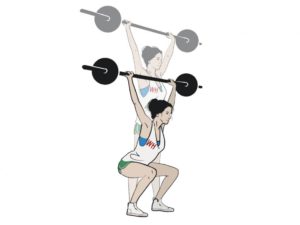
“Symmetry” is a term that most of us are aware of, and generally understand to mean something along the lines of “mirror images in a side to side comparison”. Good examples of perfect symmetry are butterflies or snowflakes. People, on the other hand, are rarely completely symmetrical. The two halves of a human body are hopefully “balanced in proportion” even if they are not exact mirror images. It is generally best to strive to be as balanced as possible to maintain optimal mechanics while walking or running. Imbalances in body function become more obvious and problematic during extreme challenges, such as running marathons or sprinting. But even with less extreme activity, they can lead to pain or altered performance such as loss of pace over a longer period of time.
Symmetry with Running
If a runner is asymmetrical, some muscles or areas of one side of the body must work harder than the other inhibited or weaker side to compensate. For example, a runner who is “quad dominant” overuses their quadriceps muscles (on the front of the thigh) while underutilizing the posterior aspect of their legs, such as hamstring and gluteal muscles. Glutes are a commonly underutilized muscle among runners, which can eventually lead to injury since they really should be one of the primary muscle groups utilized while running or even walking. Although imbalances can lead to pain or injury, this is not always the case. Although pain is the most common symptom of imbalances, asymmetries can also be suspected when there is an inability to increase one’s pace while running long distance or sprinting. It is possible that this performance deficit is due to inefficient mechanics.
Referred Pain
People generally associate pain with the body part that hurts. This is understandable, but the painful body region is often not the root cause of their pain. In fact, by some estimates, 80% of the time when pain occurs it is actually the result of a dysfunction in another area. Knees, for instance, are commonly a problematic joint due to other “remote” factors. Knee pain is often not due to inefficiency of the knee joint itself, but instead stems from pelvic imbalance which at its root could be a result of core, hip, and/or glute weakness. Referred pain can also occur because of nerve irritation which stems from one’s back and may travel down to the leg in various distributions, depending on the nerve root that is irritated. A third possibility – frequently seen in patients with knee pain – is that structural asymmetries in the feet are creating issues and pain further up the leg.
How do you know if you are symmetrical or imbalanced?
So how can you know if you are imbalanced while running, walking, or performing day to day activities? As stated previously, pain is a primary indicator that something may not be balanced. Or even if pain is not a limiting factor, there are a few simple tests that may indicate weakness or that you may have an alignment issue. Here are a couple of activities that you might attempt to help you to determine how symmetrical you are:
- Overhead Squat: Start with feet about hip width apart and hold a stick or towel overhead. Sit into as deep of a squat as possible with the stick or towel aligned over your feet.
- What to look for:
- Knees caving in towards each other often indicate hip weakness
- Heels coming off of the ground may indicate calf tightness or reduced ankle mobility
- Inability to reach arms directly over your feet could indicate reduced shoulder joint mobility or muscle tightness
- What to look for:

- Push-up: Start in a plank position with either your feet or knees on the ground. Perform push-up while maintaining a flat, ‘table top’ shaped body.
- What to look for:
- Scapular ‘winging’ or seeing / feeling the shoulder blades protruding away from the wall of one’s back may indicate muscle weakness.
- Stomach ‘sagging’ downward or inability to keep your bottom in line with the rest of your body could demonstrate core stabilizing muscle weakness
- What to look for:

When is PT assessment indicated?
Pain is often the most obvious indicator that prompts people to call a physical therapist. If you suffer from pain that has been going on for more than about 2 weeks, it is advisable to be evaluated by a physical therapist. The longer you wait, the more chronic your condition may become and the longer the recovery process is likely to be. That said, if you recognize any movement dysfunction based on the tests described above, or even if you feel “off’” while running or performing other exercises, it would be appropriate to see a physical therapist who can more thoroughly assess your alignment, strength, and mobility. It will then be possible to determine the best way to address your movement impairment and to reduce your risk of injury or ongoing pain.
If you have any questions about your particular situation, feel free to give Symmetry a call. We’d be happy to help you to walk or run right!
